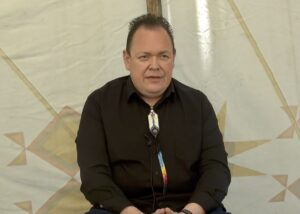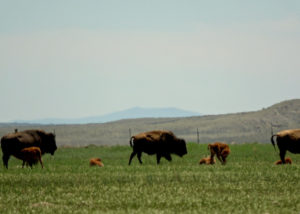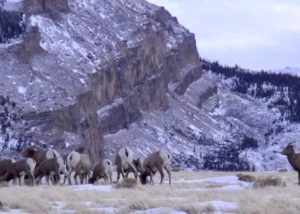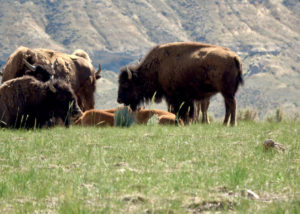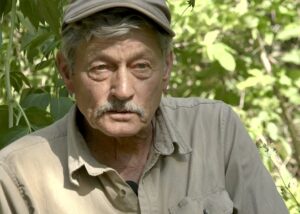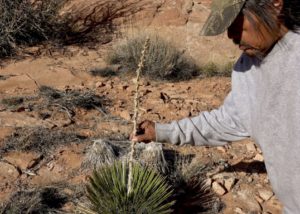Harvesting Buffalo
Anatomy and Natural History
This is the largest of the North American ruminant species, adults reaching two thousand pounds. They once ranged from Mexico to Canada in the many millions and came dangerously close to extinction in the late 19th century, due to market hunting and wanton killing. Wyoming was the last refuge of these Pleistocene remnants, with the last free roaming herds occurring in the Red Desert and Yellowstone National Park in the mid 1880’s. Estimates put the total population at 841.
They first appear in the fossil record around two million years ago and spread from Asia into North America over the Beringia land bridge about 300,000 years ago or more. The Steppe bison of Eurasia eventually evolved into four species of American bison, only one of which still exists. It is a close relative of the European bison (Bison bonasus) which went extinct in the wild many years ago but has been reintroduced from captive herds.
The term “buffalo” comes from the French trappers who called them Boeufs – referring to ox or bullock. Since “bison” is derived from the Greek, meaning “ox-like”, the term buffalo may not be that far off the mark. Either is considered correct, but only “bison” is considered biologically or technically correct.
Bison latifrons, the Giant Bison in the fossil record was thought to have evolved on the North American continent around 500,000 years ago and then became extinct around 25,000 years ago.
They evolved in an ancient time when animals were much larger, wolves, bears, beaver, and cats. Perhaps the Native people had seen and even hunted them before they disappeared during the great quaternary extinction event at the transition from Pleistocene to Holocene epoch which claimed the lives of many of the North American mega fauna of the time.
Native American
Petroglyphs and pictographs of bison occur in many places in Wyoming and throughout the American West. Native peoples prized the buffalo for its meat and its hide. After tribes adopted the horse (a pivotal point in their cultural history) buffalo became an even more reliable resource for most of their needs, as well as a focal point of Indian religion and ceremony. The destruction of the great herds of bison by market hunting, sport hunting, and military strategy in the late 1800’s, collectively helped undermine the culture, religion, and morale of the plains tribes whose horses allowed buffalo to be hunted as an infinite resource. Even so, hunting buffalo was not easy. It required bravery and skill. Early naturalists from the East described these giant hairy beasts as an unpredictable, dangerous, and savage animal that feared no other animal. They were considered more dangerous than the grizzly bear.
At the center of the ancient Shoshone Sun Dance ceremony is the forked cottonwood tree in the middle of the Sun Dance lodge; at the top of the Sun Dance pole is the head of the bull bison. To this day, it is at the center of many Native spiritual practices.
The bison appears in the center of the state flag of Wyoming.

